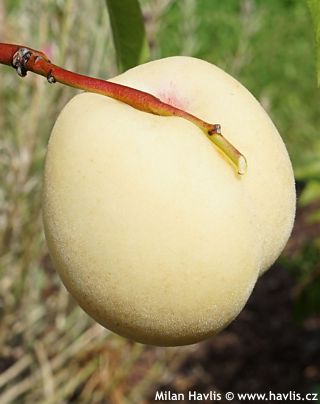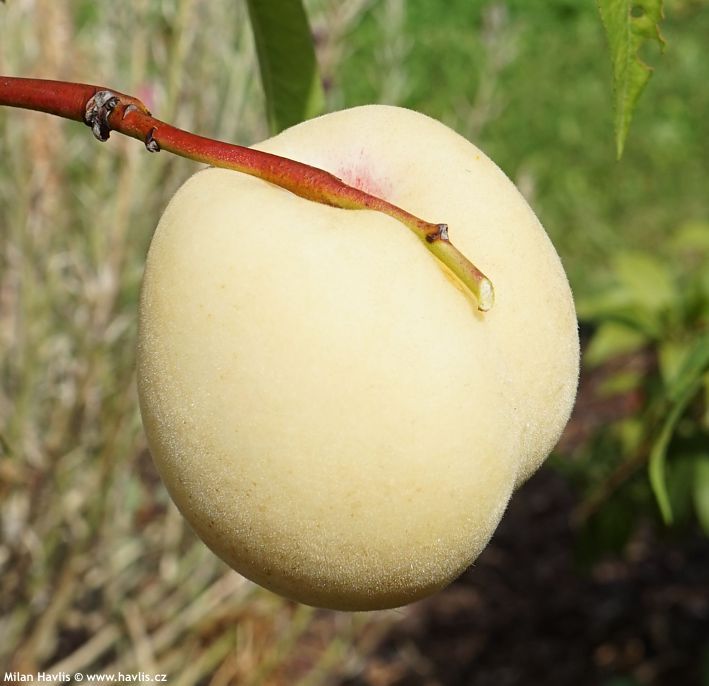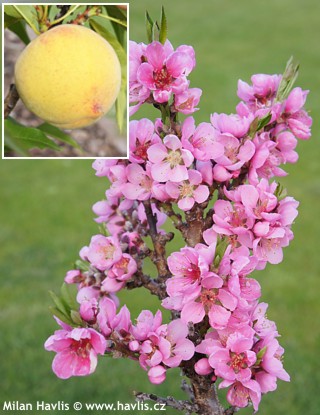Prunus persica 'ICE PEACH' dwarf peach tree - medium late, white flesh


We suggest planting peach trees in free space so it can feel cold, spring breeze which will delay flowering and thus prevent the flowers from frost damage. It likes slightly alkaline soil, moist but well drained. Do not transplant bare-root trees in autumn, only in spring. Pruning is possible in early spring after flowering or in mid-late August after harvesting the fruit – reduce long branches to 30-50% of their size and remove weak ones. The best yield however is from an unpruned tree which grows naturally. Hardy to about -27°C (USDA zone 5b).
Last update 31-10-2019
Goods are shipped all over Europe. For Russia and U.K. and for further details please read about SHIPPING OPTIONS HERE.
Are you interested in a serious discount for orders NOV-FEB? Check your options here.
THE PRICES INCLUDE VAT of 15%. For quick conversion you can use 1 CZK = approx. 0.04 EUR
- STANDARD QUALITY - Plants of this group are 1st class quality with number of branches and overall density adequate to their size and age, considering they were container grown.
- DE LUXE QUALITY - This label guarantees a luxurious quality of manually selected plants that, compared to their height and age, are exceptionally dense and beautiful.
- EXTRA - These plants are usually mature and bigger specimens with exceptional overall appearance.
- STANDARD (as described in the plant form) means a tree with a trunk of 190-210 cm and a crown at the top, unless specified differently. The commercial size for trees is their girth measured in the height of 1m from ground.
- HOBBY - These plants are of the same quality as our standard-quality plants but younger and therefore cheaper.
- SHRUB - a woody plant with branches growing bushy from the ground level.
- HALF-STANDARD or MINI-STANDARD - a small tree with shorter trunk, its size is usually specified.
- FEATHERED - These are trees with branches growing already from the base of the trunk and up along the stem.
- GRASSES and PERENNIALS - Sizes given usually read the diameter of the pot or the clump, as specified.















